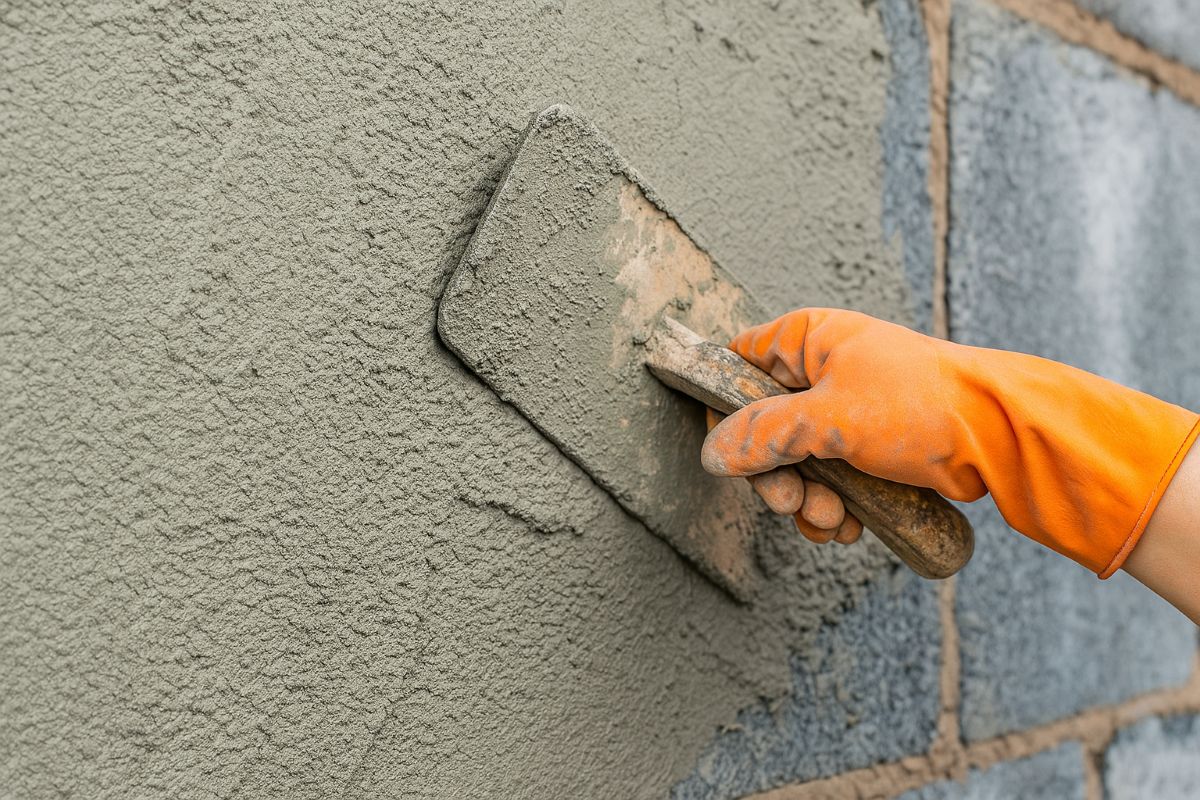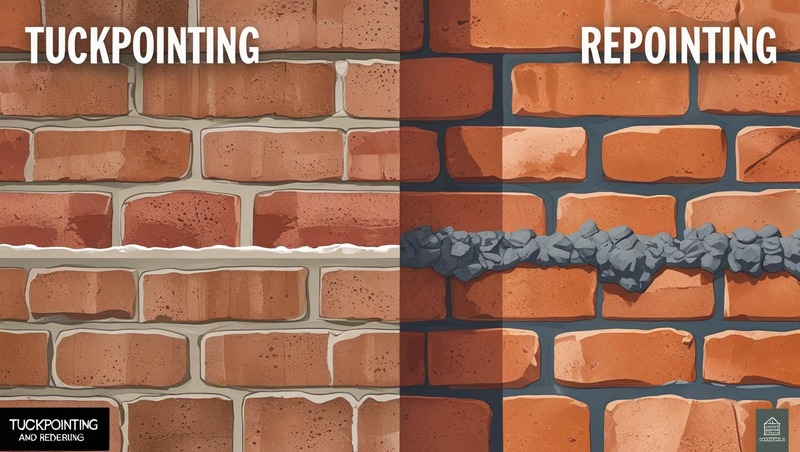When walls begin to show signs of cracks, chips, or wear, homeowners and property managers often look for a reliable way to restore their structure without undergoing full-scale renovations. Patch Render Services Sydney has become one of the most effective solutions for repairing damaged walls, providing a seamless finish that enhances both durability and aesthetics. Whether it’s a minor crack in a residential home or extensive wall damage in a commercial property, patch rendering ensures the structure looks new again while maintaining its integrity.
In this article, we’ll explore what patch render services involve, why they are crucial for property maintenance, and how they compare to other related services such as tuckpointing & repointing services and swimming pool rendering.
What is Patch Rendering?
Patch rendering is a technique used to repair small sections of damaged or deteriorating walls without the need to re-render the entire surface. It involves carefully preparing the affected area, applying a fresh coat of render, and blending it with the surrounding wall for a uniform appearance.
Unlike traditional rendering, which covers entire walls or surfaces, patch rendering is targeted and cost-effective. It is especially beneficial for property owners who want to restore specific areas without investing in a full renovation.
Common Wall Problems Requiring Patch Render Services
Sydney’s weather, including intense heat, humidity, and heavy rains, can take a toll on rendered walls. Over time, cracks, holes, or structural imperfections may appear. Common wall issues that require patch render services include:
- Cracks and splits caused by building movement or temperature fluctuations.
- Water damage due to poor drainage or leaks.
- Surface erosion from constant exposure to weather elements.
- Aged or flaking render that diminishes the appearance of a property.
- Impact damage from accidental bumps or construction work.
By addressing these issues promptly with patch rendering, property owners can prevent small damages from turning into costly repairs.
Why Choose Patch Render Services in Sydney?
When it comes to wall restoration, patch rendering is not only affordable but also practical. Here are the key benefits:
Cost-Effective Repairs
Instead of re-rendering entire walls, patch render services allow you to fix only the damaged sections, saving money on materials and labor.
Time-Saving Solution
Full-scale rendering projects can take days or even weeks. In comparison, patch rendering is a faster process, often completed within hours depending on the extent of damage.
Seamless Finish
Professional rendering contractors in Sydney ensure the repaired area blends perfectly with the existing wall, making the fix nearly invisible.
Prevention of Structural Damage
Cracks and gaps in walls can lead to water penetration, pest infestations, and weakened structures. Patch rendering seals these openings effectively, preserving the building’s strength.
Improved Aesthetics
Whether for residential or commercial properties, a clean, smooth wall surface enhances overall curb appeal and property value.
Patch Rendering vs. Other Wall Repair Methods
While patch rendering is one of the most sought-after solutions, other repair methods are often considered. Here’s how it compares:
Tuckpointing & Repointing Services
- Used mainly for brick structures, tuckpointing and repointing involve repairing the mortar joints between bricks.
- While patch rendering focuses on surface restoration, tuckpointing strengthens the joints, preventing structural weaknesses.
- For heritage homes or brick façades in Sydney, tuckpointing & repointing services are ideal, while patch rendering is best suited for rendered surfaces.
Swimming Pool Rendering
- Swimming pool rendering involves applying a strong, waterproof render inside pool structures to protect against leaks and improve aesthetics.
- While patch rendering is for walls, swimming pool rendering is a specialized service tailored for water retention and durability in pool environments.
- Both services aim to extend the life of the structure and enhance appearance.
By understanding the distinctions, property owners can choose the right solution for their specific needs.
The Patch Rendering Process in Sydney
Professional contractors follow a structured approach to ensure flawless results:
- Assessment – The wall is inspected to identify cracks, water damage, or erosion.
- Preparation – Damaged areas are cleaned, and loose render is removed.
- Application – A new render mix is carefully applied to the affected sections.
- Blending – The repaired patch is smoothed and matched with the existing texture.
- Finishing – Once dry, the area can be painted or coated for additional protection.
This meticulous process ensures longevity and a consistent look across the wall.
Applications of Patch Render Services
Patch rendering is versatile and can be applied to various settings across Sydney:
- Residential Homes – Repairing cracks and chips in external walls, garden walls, or internal plastered areas.
- Commercial Buildings – Maintaining a professional appearance by fixing weathered façades.
- Heritage Properties – Preserving original aesthetics while repairing damage in older structures.
- Renovation Projects – Preparing walls for repainting or decorative finishes.
Why Hire Professionals for Patch Rendering in Sydney?
While some property owners may attempt DIY repairs, professional patch render services deliver long-lasting and visually appealing results. Here’s why hiring experts matters:
- Experience: Skilled contractors understand the correct render mix and techniques for different wall types.
- Tools & Materials: Professionals use high-quality tools and rendering materials that guarantee durability.
- Seamless Integration: Matching the patch with the existing render requires skill to avoid visible inconsistencies.
- Warranty & Reliability: Reputable Sydney rendering companies often provide guarantees for their work, giving property owners peace of mind.
Maintenance Tips after Patch Rendering
To keep your walls in great condition after patch rendering:
- Regularly check for new cracks or water stains.
- Ensure proper drainage to avoid water penetration.
- Clean rendered surfaces gently to prevent dirt buildup.
- Repaint walls when necessary to maintain aesthetics and added protection.
By combining patch rendering with proper maintenance, you can extend the life of your walls significantly.
Related Services You May Consider
While patch render services in Sydney are excellent for fixing localized damage, you may also benefit from other rendering and wall maintenance services:
- Tuckpointing & Repointing Services for heritage brick restoration.
- Swimming Pool Rendering to enhance pool durability and prevent water leakage.
- Full Cement Rendering if your entire wall surface needs a complete makeover.
- Acrylic Rendering for flexible, weather-resistant finishes on modern homes.
Interlinking these services ensures property owners choose the most suitable option based on their specific requirements.
Conclusion
Walls play a crucial role in both the functionality and appearance of your property. When damage occurs, Patch Render Services Sydney offers the perfect solution by repairing cracks, chips, and worn surfaces quickly, cost-effectively, and with a flawless finish. Whether you own a modern home, a commercial property, or a heritage building, professional patch rendering can restore your walls and protect them from future damage.
For property owners seeking comprehensive care, services like tuckpointing & repointing and swimming pool rendering further extend structural durability and improve aesthetics. By investing in expert wall restoration and maintenance, you ensure your property remains strong, appealing, and valuable for years to come.



